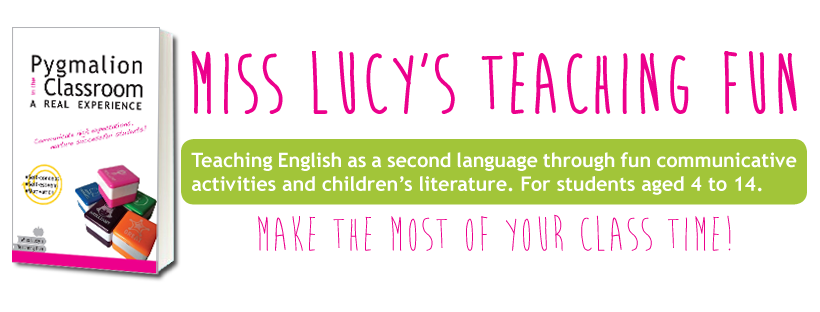I've recently found the perfect excuse to devote some precious time to reading "The Reading Zone", by Nancie Atwell, who happens to be the first teacher to win The Global Teacher Prize, just in case you're not familiar with her name.
In fact, since I had to design a blog for didactic purpose as part of a a university assignment for my ICT class, I decided to be a little bit more innovative and creative by giving an old project of mine another chance: The Reading Club (version 2.0 in this case). It was originally designed for Spanish children and Spanish children's literature, but you can definitely make it work for your own students and whatever language you'd like them to improve.
So let's take a closer look at Nancie Atwell and her book. First of all, I'd like to clarify what "The Reading Zone" means: it's the place readers go when they leave our classroom behind and live vicariously in their books (Chapter 2, page 21). It's comparable to a 'private internal movie, but better,' as I also described it in this post.
This state of mind is possible only if the mechanisms of reading comprehension are working and the reader has personally chosen the novel. But the question is: how does reading comprehension work? To make a long story short (though you should definitely read the book) we, as readers, understand what it makes sense to us. Our comprehension of a text is directly connected to the percentage of the words whose meaning we understand without too much effort, which is normally about 90%. As a consequence, if a child is struggling with a book, it means that they can't figure out the meaning of enough of its words.Therefore, it's important to learn how to pick a title that will be the right match for our student's reading skills.
So how do we do that?
Leslie Funkhouser has developed an approach that defines 3 levels of book difficulty: Holiday, Challenge and Just Right. Holiday books are, as you can guess, easy reads, while Challenge are books which will require some adult assistance; finally, Just Right titles are novels which meet both the reader's needs and their level of skill.
How to determine which category the book falls into is a easy enough if you are acquainted with Janette Veatch's "rule of thumb" (1968): turn to a page in the middle of the book you're considering, read it silently and use a finger to mark each unfamiliar word. If you hit 5 words - using all four fingers and your thumb - it means that the book is too difficult (i.e. a Challenge) for you at that moment of your reading life.
Easy, isn't it?
In addition, the best thing about this method is that it labels the books, not the child, which is fundamental in order to avoid undermining their confidence and to help expand their reading choices.
Here's the link to Nancie Atwell's school: Center for Teaching and Learning.
Don't miss the recommended books section!
More about books.
-->Quiero leer este post en castellano.




In fact, since I had to design a blog for didactic purpose as part of a a university assignment for my ICT class, I decided to be a little bit more innovative and creative by giving an old project of mine another chance: The Reading Club (version 2.0 in this case). It was originally designed for Spanish children and Spanish children's literature, but you can definitely make it work for your own students and whatever language you'd like them to improve.
So let's take a closer look at Nancie Atwell and her book. First of all, I'd like to clarify what "The Reading Zone" means: it's the place readers go when they leave our classroom behind and live vicariously in their books (Chapter 2, page 21). It's comparable to a 'private internal movie, but better,' as I also described it in this post.
This state of mind is possible only if the mechanisms of reading comprehension are working and the reader has personally chosen the novel. But the question is: how does reading comprehension work? To make a long story short (though you should definitely read the book) we, as readers, understand what it makes sense to us. Our comprehension of a text is directly connected to the percentage of the words whose meaning we understand without too much effort, which is normally about 90%. As a consequence, if a child is struggling with a book, it means that they can't figure out the meaning of enough of its words.Therefore, it's important to learn how to pick a title that will be the right match for our student's reading skills.
So how do we do that?
Leslie Funkhouser has developed an approach that defines 3 levels of book difficulty: Holiday, Challenge and Just Right. Holiday books are, as you can guess, easy reads, while Challenge are books which will require some adult assistance; finally, Just Right titles are novels which meet both the reader's needs and their level of skill.
How to determine which category the book falls into is a easy enough if you are acquainted with Janette Veatch's "rule of thumb" (1968): turn to a page in the middle of the book you're considering, read it silently and use a finger to mark each unfamiliar word. If you hit 5 words - using all four fingers and your thumb - it means that the book is too difficult (i.e. a Challenge) for you at that moment of your reading life.
Easy, isn't it?
In addition, the best thing about this method is that it labels the books, not the child, which is fundamental in order to avoid undermining their confidence and to help expand their reading choices.
Here's the link to Nancie Atwell's school: Center for Teaching and Learning.
Don't miss the recommended books section!
More about books.
-->Quiero leer este post en castellano.




















